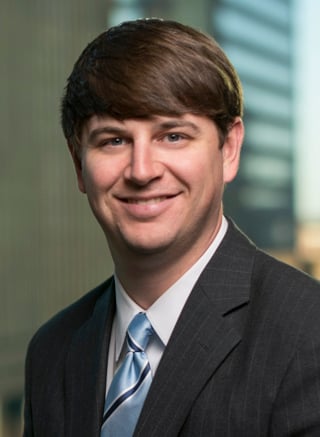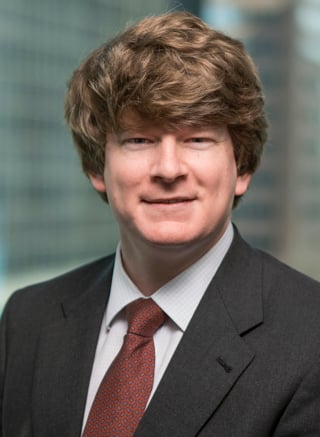Objection: The U Is Badgering the Player – University of Wisconsin Sues University of Miami over Tampering
NIL & Sports Media Update
The enforceability of player NIL contracts under the House v. NCAA settlement is already being tested before the ink has even dried on the court's final approval. In a potentially precedent-setting move, the University of Wisconsin filed a lawsuit against the University of Miami on June 20, 2025, claiming that Miami tortiously interfered with a Wisconsin player’s revenue-sharing and NIL contracts. In the lawsuit, filed in Wisconsin state court, the Badgers allege that Miami tortiously interfered and tampered with a player’s revenue-sharing agreement with the university and with the NIL agreement between the player and the university’s collective, as well as with the university and the collective’s prospective contracts with the player. Wisconsin is seeking a declaratory judgment and damages.
At the center of the dispute is “Player A,” a football student-athlete who had a standout freshman season at Wisconsin in 2024. While the complaint maintains his anonymity, media reports have widely identified the player as former four-star cornerback Xavier Lucas. Following a successful year, Player A was offered two NIL-related agreements:
University Agreement - Player A signed a Memorandum of Understanding with the University of Wisconsin granting it a two-year exclusive license to use his name, image, and likeness, with compensation scheduled to begin July 1, 2025. This agreement was expressly conditioned on final approval of the House settlement.
Collective Agreement - Player A also entered a separate agreement with VC Connect, Wisconsin’s NIL collective, providing compensation during the interim period before the university payments commenced.
According to the complaint, these NIL arrangements were among the most significant ever offered to a Wisconsin athlete. Both agreements included representations that Player A had no conflicting obligations and would not commit to or enroll in another institution during the contract period. Nevertheless, the lawsuit alleges that soon after the agreements were executed, Player A was contacted by other programs, including the University of Miami. The complaint describes an in-person meeting involving Player A, a Miami coach, and a prominent alumnus during which a more lucrative NIL offer was allegedly made if Player A agreed to leave Wisconsin and join the Hurricanes.
Player A never entered the NCAA transfer portal. However, he allegedly unenrolled from Wisconsin on May 13, 2025, and enrolled at Miami one week later, on May 20. Wisconsin contends that these actions breached both the NIL agreement and the separate collective deal, and that Miami knowingly induced the violations.
The case presents a critical early test of the legality and enforceability of NIL agreements in the post-House landscape. One specific issue will be whether NIL contracts of this kind are enforceable under state law, particularly when they are contingent on final court approval of a federal settlement. Wisconsin alleges that the agreements were supported by consideration and contained binding obligations, while Miami may argue that they were non-final or lacked enforceability due to their contingent nature.
Tampering and Civil Liability
The lawsuit also raises the broader issue of whether tampering with NIL contracts can form the basis of civil liability. Professional sports leagues handle tampering through internal investigations that can result in penalties such as fines, suspensions, loss of draft picks, and other disciplinary measures generally enforced under the league’s respective collective bargaining agreements. While the NCAA has rules prohibiting tampering and similar enforcement mechanisms to those used by professional leagues, the direct payments authorized under the House settlement introduce new financial implications that make tampering a potential threat to a school’s bottom line, potentially prompting institutions to seek relief through the courts rather than relying solely on NCAA channels. Player A transferring to Miami as a regular student was not illegal or in violation of NCAA rules, and Wisconsin may face an uphill battle in proving that the transfer constitutes a form of tortious interference. If the court permits these claims to move forward, this case could set the playbook for how NIL agreements are enforced in the future. And it could also encourage NIL collectives and institutions to rely more heavily on civil litigation to protect their investments and deter unauthorized recruitment activity.
State NIL Laws
This case may also prompt renewed attention in state legislatures to NIL bills addressing causes of action for tampering. Indeed, some states already have. Arkansas’s current NIL law, codified at Ark. Stat. § 4-75-1301 et seq., expressly provides that “[a]n institution or its supporting foundations or authorized entities and third-party licensees shall have a cause of action against any party” that gives or promises to give compensation for the use of a student-athlete’s name, image, or likeness, whether the student-athlete is enrolled at an institution of higher education in Arkansas or is a prospective student-athlete who has signed an enrollment contract with such an institution, if the purpose is to recruit or induce the student-athlete to enroll at another institution. The law also authorizes the prevailing plaintiff to recover punitive damages and reasonable attorneys’ fees and costs. While Wisconsin’s claims are grounded in common-law torts, it is likely that states will adopt statutory protections aimed at regulating NIL interference and recruitment conduct for their own institutions.
Sovereign Immunity
Although the University of Miami is a private institution and therefore not shielded by sovereign immunity, the situation could be different in future lawsuits involving public universities. Sovereign immunity may limit or preclude certain claims for monetary damages against state schools unless there has been a legislative waiver or the claims fall within an applicable exception. As NIL litigation increases, institutions contemplating legal action will need to assess not just the strength of their claims, but also whether the target school’s public status could restrict recovery and whether the pursuit of such claims could impact any sovereign immunity protections they themselves enjoy.
If the Wisconsin lawsuit proceeds successfully, it could set a powerful precedent for how NIL agreements are viewed and enforced. Schools and collectives may begin inserting stronger contractual safeguards, including non-solicitation clauses, liquidated damages provisions, and more detailed representations regarding athlete obligations. One thing is clear: NIL agreements are no longer just informal promotional tools, they are rapidly becoming enforceable legal instruments. In a post-House world, college athletic recruiting and player commitments involve far more than locker rooms outfitted with infinity pools and PlayStations®. They now include direct monetary payments from universities and their affiliated collectives. With those payments come an increasing demand for legal protection and enforceable safeguards. Universities may become less willing to simply “cut their losses” when athletes exit unexpectedly. The Wisconsin v. Miami case may mark the beginning of a broader shift toward litigation-based enforcement of NIL rights in collegiate sports.



